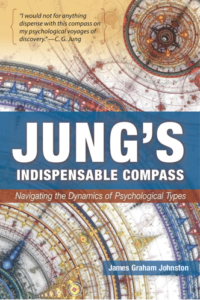What is an idea?
Even though we speak of ideas easily and often, for the experience of having ideas is common to us all, no one actually knows what an idea is, in and of itself. We experience them, and we tend to claim them as our own, though truly we know not from whence they come or wither they are intended to go
A materialistic view might suggest that the organic electro-chemical synapses in our brains generate ideas. Those synapses have been demonstrated to be integral to the experience, but whether they are causal or collateral is unknown. The synapses may be instrumental, the way a radio is instrumental in conveying sound. But the synapses, like the radio, may only play the role of transmitters of ideas, rather than acting as the source of those ideas.
It seems odd indeed to think that the living cells that comprise neurons have the intelligence within them to generate ideas that assist people in navigating train schedules, or creating soulful poetry, or writing novels, or deriving new approaches to psychology, or constructing a hundred-story office tower. Odd? Well, when we give that idea deeper thought, it seems clearly absurd.
Thoughts, ideas, deep undirected thinking, purposeful directed thinking — these are all phenomena that are unknowable mysteries to us. Yet, we have terms to identify them, thus shifting them from pure mystery to phenomena that are known. If we know them as labels, the knowing as labels obscures the insecure and uncertain reality of what they truly are — mysteries.
If we turn to Jung’s observation — these ideas somehow have us, rather than our having ideas — it helps to gain greater traction in understanding the extent of the mystery. Thoughts and ideas have different characters. Some thoughts and ideas are instrumental for living life in the world — what train to take to get from Geneva to Zurich, what course to take to learn to speak German, how to identify the best way to get from Florida to California, how to follow the instructions to build a cabinet from Ikea?
But other ideas arrive out of the blue, like thoughts that gently float into our conscious awareness. These ideas have the power to direct our lives — the thoughts that seem to have us in their grip.
Some seem to arrive from what Jung termed the “personal unconscious.” We encounter an experience that resonates with an earlier distasteful or traumatic experience, and the thought of reenacting that experience possesses us with a nervous anxiety. They rise up out of a dark interior and pull us down into an obsessive or compulsive desire to avoid more of those experiences. They are symptoms of emotional wounds that need healing.
Other ideas seem to fill our whole embodied being with a vitalizing inspiration — the kinds of inspirational ideas that set a novelist on a course to write a new novel. The novelist, Vladimir Nabokov, described these inspirational ideas artfully:
A prefatory glow, not unlike some benign variety of the aura before an epileptic attack, is something the artist learns to perceive very early in life. This feeling of tickly well-being branches through him like the red and the blue in the picture of a skinned man under Circulation. As it spreads, it banishes all awareness of physical discomfort — youth’s toothache as well as the neuralgia of old age. The beauty of it is that, while completely intelligible (as if it were connected with a known gland or led to an expected climax), it has neither source nor object. It expands, glows, and subsides without reveal- ing its secret. In the meantime, however, a window has opened, an auroral wind has blown, every exposed nerve has tingled. Presently all dissolves: the familiar worries are back and the eyebrow redescribes its arc of pain; but the artist knows he is ready.
Ideas of this kind also possess us, for they form the obsessive need to live them out in some way. In Nabokov’s summary, the artist now knows he is ready to embark on that creative journey to fully illustrate the idea with a complete written story.
Philosopher’s may get these compulsive ideas. They may apprehend a vague, seemingly distant notion of an idea that needs fuller understanding and expression. Immanuel Kant, the eighteenth century philosopher, seemed possessed by such an idea. He devoted ten years of his life mentally circumambulating a new, perplexing idea, born from a comment by David Hume, a contemporary philosopher. In these ten years of a daily pilgrimage to sort out an idea that seemed to take possession of him, you could set your clock by his daily afternoon walks. He told his friends he would be absent from their social events, for he was resolutely devoted to understanding an idea that he felt compelled to pursue. After ten years of thoughtful reflection, he wrote his seminal book, Critique of Pure Reason, a book that shook the foundations of Enlightenment philosophies that had preceded him.
And surely Carl Jung was possessed by ideas. Early on in his life, he was symptomatically troubled by an uncertain career direction. He had intensively studied both philosophy and medicine, but had little enthusiasm for life as a medical doctor. Then, in the final year of his studies, he picked up the text book that had previously struck him as boring — the text on psychiatry — and after reading the introduction, he knew what he must do. Understanding human psychology became his life-long pursuit and his multivolume Collected Works serves as the foundation today for thousands of practitioners of Jung’s Analytical Psychology.
Ideas and thoughts, the practical ideas about navigating life in a physical world, the ideas and thoughts embedded in emotional memories, the inspirational ideas and thoughts that generate new poetry, literature, philosophy, and psychology — these ideas and thoughts seem to direct and guide our life paths.
From where do they come? We know not. What are they? We know not. We know them as part of the human experience, but what they are and why they have the power to “have us” is all mystery.
We give these phenomena names — ideas and thoughts — an in naming them we are given to the false premise that we understand them. But they are simply elements of a life full of names and labels for much that is far beyond our understanding. We live and walk in utter mystery; very little of what we say we “know” do we truly understand. Ideas and thoughts are elements of a larger fabric of consciousness. They constitute yet one more element of mystery that we claim to know and have. Yet, as Jung observed, our ideas may indeed have us, rather than our conceit that we have ideas.
J G Johnston
Author of Jung’s Indispensable Compass
1/9/2024
